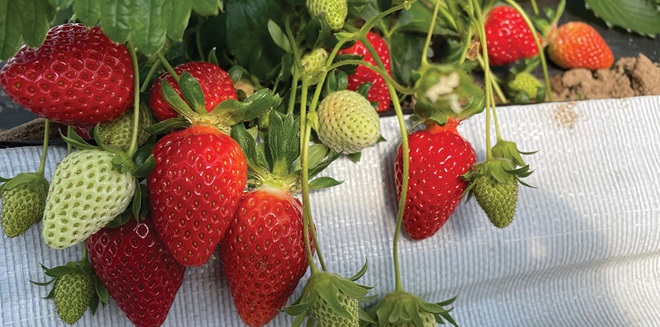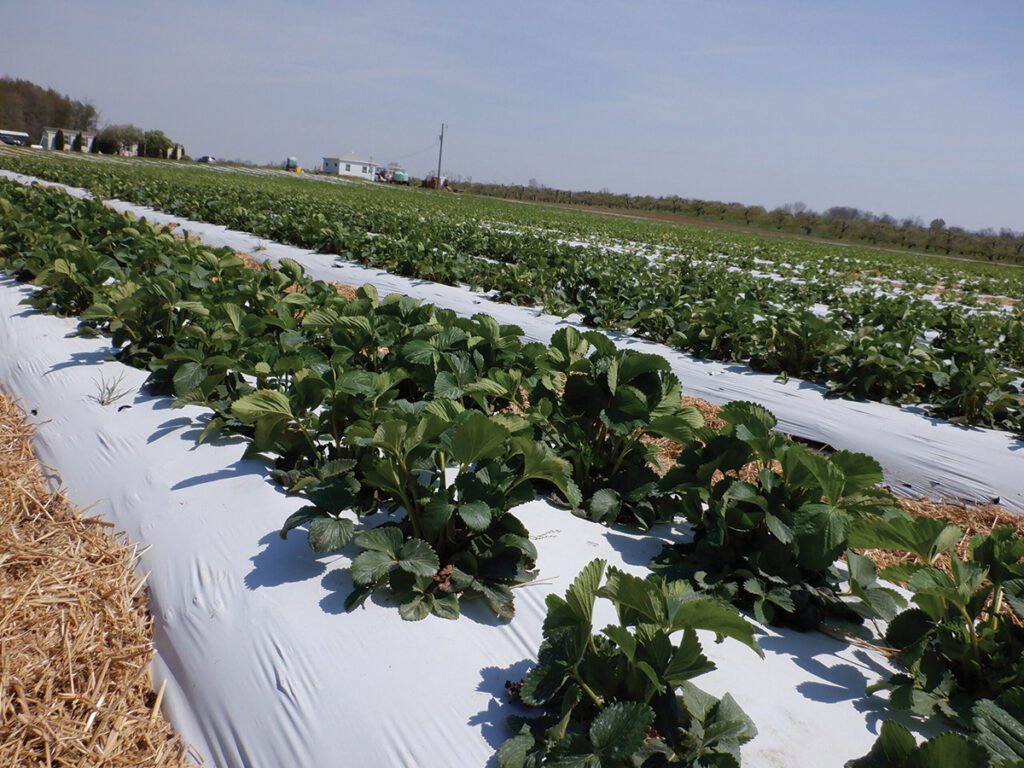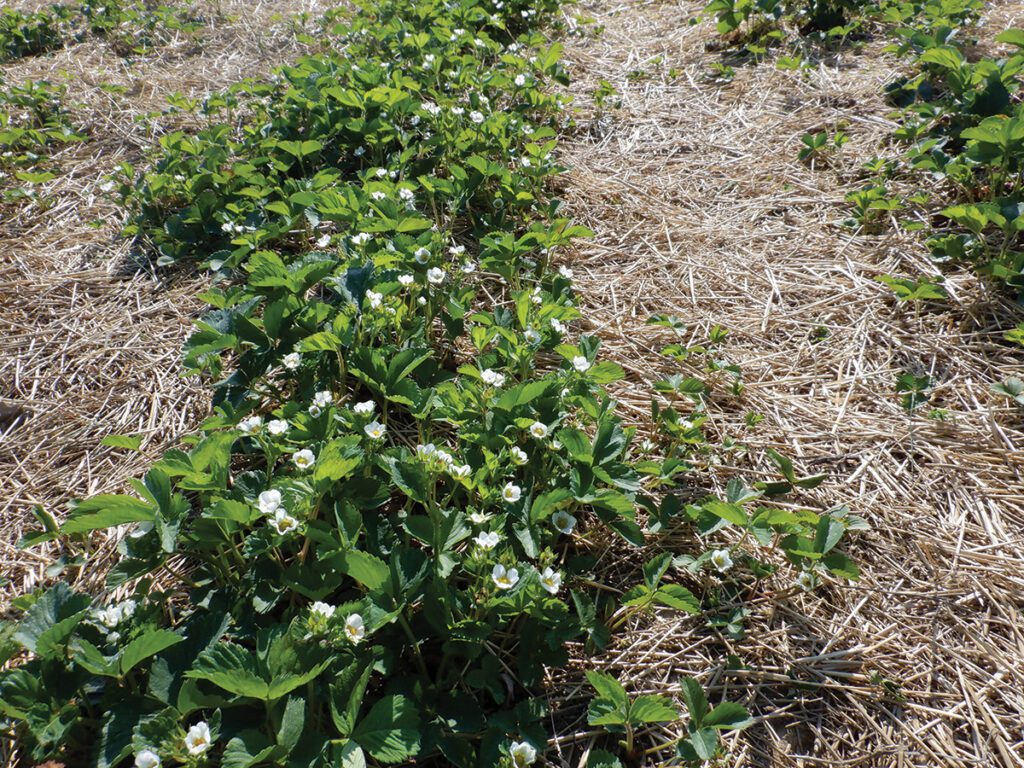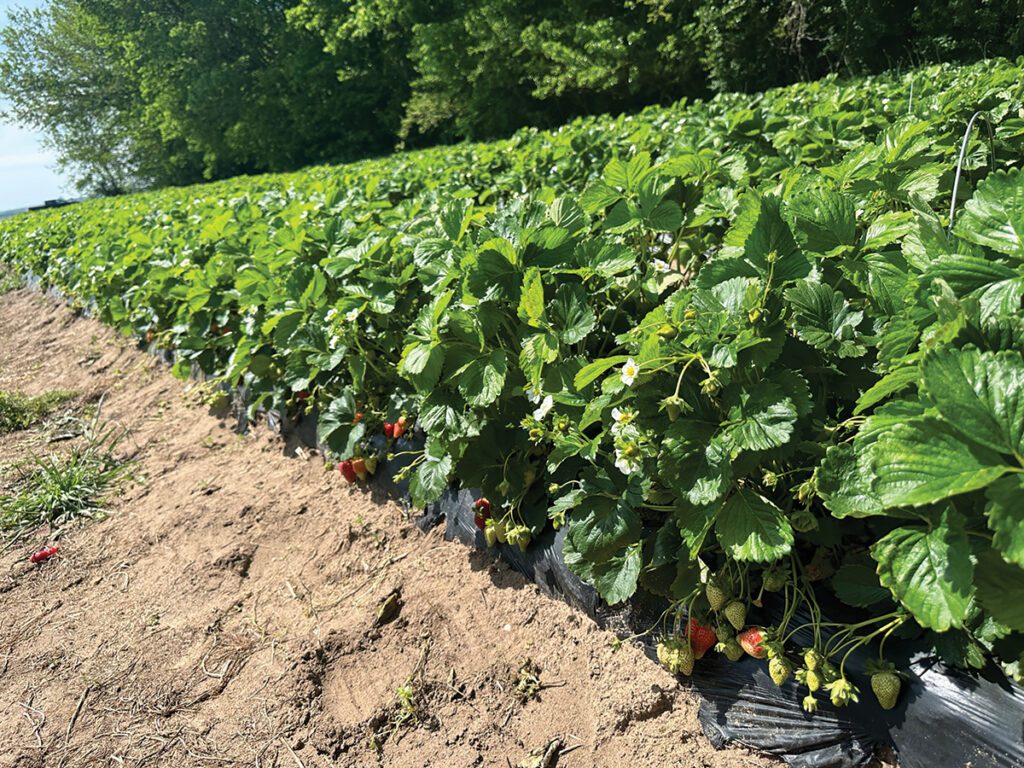

Dec 18, 2023Strawberry options: Plasticulture, matted-row production
When I started my job as an Extension specialist at Purdue eight years ago, strawberries were mainly grown as a perennial crop in a matted-row production system in orchards and u-pick farms.
Despite strawberries being mostly grown in the matted-row system back then, farmers became curious about plasticulture production systems. Plasticulture has advantages compared to the matted-row system, particularly in controlling weeds. Still, it is difficult for strawberry plants to reach the desirable size in the short-fall conditions in the region to achieve optimal yield in the following spring.


Use of plasticulture was low in Indiana, but that has been changing, partly because of increased research and outreach activities. More importantly, after years of exploration, farmers adjusted the system to make it more suitable for temperate regions. Unlike the production system used in the southern states, satisfactory yields are more likely when plugs are planted in July or August in Indiana.
Nurseries now sell strawberry plug plants in July and August to meet Midwest growers’ needs.
Farmers are also planting bare-root plants on white plastic or growing transplants from bare roots to establish the crops in the summer. Even though this requires more labor than planting plugs, they extend the planting window and overcome the limitation of plug availability.


Aiming for a two-year production system rather than an annual one makes the system more economically feasible. Runner management and weed control after the first year’s harvest can be overwhelming.
Unheated high tunnels and low-tech hoop houses or caterpillar tunnels are widely used among small-scale diversified farms. Using the plasticulture system in growing early-ripening, June-bearing strawberry cultivars extends strawberry harvest to the middle of April in southern and central Indiana, 2-6 weeks earlier than open-field growing, depending on production systems.
The early-season strawberry provides significant market advantages to farms with spring markets.
In addition, the crop brings ecological benefits to diversified farms. Strawberries are suitable for growing in low-tech hoop houses or caterpillar tunnels. They are cold-hardy to survive in unheated hoop houses in the winter. Spring frost damage often can be avoided when floating row covers are used inside the tunnels.
The protected culture also reduces fungicide application as foliar disease pressure, such as botrytis fruit rot, is much lower than open-field production.
Nevertheless, strawberries are more sensitive to high soil salinity and pH than crops typically grown in protected culture. Thus, the system may not work for soils covered and heavily fed for extended years.


The crop has a longer cropping season than other vegetable crops grown at small farms. As a result, the economic value of strawberries grown in protected structures is hard to compete with other high-value crops. Still, the market and ecological benefits of growing annual plasticulture strawberries are attractive to small-scale, diversified urban farms.
In recent years, tabletop, substrate strawberry production in greenhouses has attracted enormous attention in the North American strawberry industry. The system typically uses day-neutral cultivars and targets high-value fall and winter markets. There has been interest in Indiana in using the table-top system, but the investment is significant and whether it will succeed economically in the Midwest is still being determined.
Diversified production systems allow farms of various sizes and farmers with different backgrounds to grow strawberries for local markets. The increased supply of locally grown strawberries benefits consumers and adds diversity to local food markets. Despite a change in the production systems, the traditional matted row will continue to play a crucial role in strawberry production in the Midwest.
This material is based on work supported by the USDA’s National Institute of Food and Agriculture under award number 2021-38640-34714 through the North Central Region Sustainable Agriculture Research and Education program under project number LNC21-454.
— Wenjing Guan, clinical and engagement associate professor, Extension specialist, Purdue University














